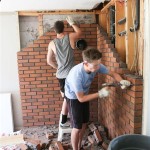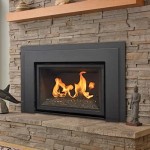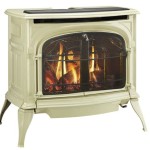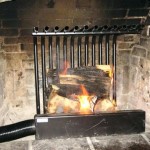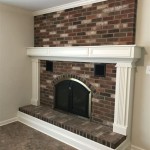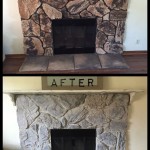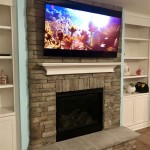Vented Gas Fireplaces: A Comprehensive Overview
Vented gas fireplaces represent a popular heating and aesthetic addition to homes. Unlike their ventless counterparts, vented gas fireplaces require a chimney or vent system to expel combustion byproducts outside the house. This venting system is a crucial aspect of their design and functionality, ensuring indoor air quality and safety. Understanding the operation, benefits, and considerations associated with vented gas fireplaces is essential for homeowners considering this appliance.
Vented gas fireplaces offer a realistic flame appearance and can provide substantial supplemental heat. They burn either natural gas or propane, offering convenience and ease of use compared to traditional wood-burning fireplaces. The presence of a venting system distinguishes them from ventless models, directly impacting their installation requirements, heating efficiency, and overall safety profile.
The market offers a wide array of vented gas fireplaces, ranging from traditional fireplace inserts to modern, linear designs. These variations cater to diverse aesthetic preferences and heating needs. Proper research and professional installation are paramount to ensure safe and efficient operation of any vented gas fireplace unit.
Key Point 1: Operation and Components of a Vented Gas Fireplace
A vented gas fireplace operates by burning natural gas or propane within a firebox. The primary components include the burner, gas valve, pilot light or electronic ignition, ceramic logs or decorative media, and the venting system. The burner distributes gas to create the flames, which are then directed upward into the venting system.
The gas valve controls the flow of gas to the burner, typically regulated by a thermostat or remote control. This allows for adjustable heat output and temperature control. The pilot light, or electronic ignition system, initiates the combustion process. Electronic ignition systems offer increased convenience and eliminate the need for a standing pilot light, potentially saving energy.
Ceramic logs or other decorative media, such as glass beads or stones, are positioned around the burner to emulate the appearance of a wood-burning fire. These elements are designed to withstand high temperatures and enhance the aesthetic appeal of the fireplace.
The venting system is the most critical component of a vented gas fireplace. It serves to exhaust combustion gases, including carbon dioxide, water vapor, and small amounts of carbon monoxide, safely outside the home. The venting system must be properly sized and installed to ensure adequate draft and prevent backdrafting, which can lead to dangerous indoor air quality conditions.
There are primarily two types of venting systems used with vented gas fireplaces: B-vent and direct-vent. B-vent systems are used with natural draft fireplaces and rely on the natural buoyancy of hot air to expel combustion gases. Direct-vent systems, on the other hand, use a sealed combustion chamber and draw air from outside for combustion, venting exhaust gases directly outside through a co-axial pipe. Direct-vent systems offer greater flexibility in installation, as they can be vented horizontally through a wall or vertically through the roof.
Proper maintenance of a vented gas fireplace is crucial for safe and efficient operation. Regular inspections of the venting system, burner, and gas connections are recommended. Cleaning the burner and ceramic logs can help maintain flame appearance and prevent soot buildup. A qualified technician should perform a thorough inspection and cleaning at least once a year.
Key Point 2: Benefits and Drawbacks of Vented Gas Fireplaces
Vented gas fireplaces offer several advantages over traditional wood-burning fireplaces and ventless gas fireplaces. A primary benefit is the realistic flame appearance. The open flame design, coupled with ceramic logs or other decorative media, creates a visually appealing and authentic fireplace experience.
Another significant advantage is the efficient heating capabilities. Vented gas fireplaces can provide substantial supplemental heat, helping to lower heating costs during colder months. The heat output is typically adjustable, allowing homeowners to customize the temperature to their desired comfort level.
Convenience is a major selling point for vented gas fireplaces. They ignite easily with the flip of a switch or the press of a button, eliminating the need for wood stacking, kindling, and fire starting. The thermostat control allows for consistent and precise temperature regulation. Moreover, cleanup is minimal compared to wood-burning fireplaces, as there is no ash or soot to remove.
Safety is a paramount concern, and vented gas fireplaces offer a relatively safe heating option when properly installed and maintained. The venting system ensures that combustion gases are effectively removed from the home, reducing the risk of carbon monoxide poisoning. However, it is crucial to have a carbon monoxide detector installed nearby as a precautionary measure.
Despite their benefits, vented gas fireplaces also have some drawbacks. One primary disadvantage is their lower energy efficiency compared to ventless models. Because vented fireplaces draw air from inside the house for combustion and then expel it outside through the venting system, they lose some heat in the process. This can result in higher energy bills, particularly in homes with poor insulation.
Installation costs can be relatively high, especially if a chimney or venting system needs to be constructed or modified. The cost of the fireplace unit itself, along with the labor and materials for installation, can represent a significant investment. The venting system must comply with local building codes and regulations, which can add to the overall expense.
Another potential drawback is the dependence on a gas line. Homes that do not have a natural gas line will need to install a propane tank, adding to the cost and complexity of the installation. Propane also tends to be more expensive than natural gas, which can impact long-term operating costs.
Finally, vented gas fireplaces require regular maintenance to ensure safe and efficient operation. The venting system should be inspected annually for obstructions or damage. The burner and gas connections should also be checked for leaks. Neglecting maintenance can lead to reduced efficiency, increased safety risks, and costly repairs.
Key Point 3: Considerations for Installation and Maintenance
Proper installation is critical for the safe and efficient operation of a vented gas fireplace. It is strongly recommended to hire a qualified and experienced technician to perform the installation. The technician will ensure that the fireplace is installed according to the manufacturer's instructions and local building codes.
The installation process typically involves several steps, including preparing the fireplace opening, running the gas line, installing the venting system, and connecting the electrical components. The venting system must be properly sized and installed to ensure adequate draft and prevent backdrafting. The technician will also test the fireplace to ensure that it is functioning correctly and safely.
Selecting the appropriate venting system is another crucial aspect of the installation process. The choice between a B-vent and a direct-vent system will depend on the existing chimney configuration, the location of the fireplace, and the desired aesthetic. Direct-vent systems offer greater flexibility in installation, as they can be vented horizontally through a wall or vertically through the roof.
Regular maintenance is essential for maintaining the performance and safety of a vented gas fireplace. Homeowners should perform regular visual inspections of the fireplace and venting system. Look for any signs of damage, such as cracks, rust, or loose connections. The burner and ceramic logs should be cleaned periodically to remove any soot or debris.
A qualified technician should perform a thorough inspection and cleaning at least once a year. The technician will inspect the venting system for obstructions, check the gas connections for leaks, and clean the burner and pilot light. The technician will also test the carbon monoxide detector to ensure that it is functioning properly. Regular maintenance can help prevent costly repairs and extend the lifespan of the fireplace.
In addition to regular maintenance, homeowners should be aware of the potential hazards associated with vented gas fireplaces. Never store flammable materials near the fireplace. Keep children and pets away from the hot glass or metal surfaces. Use a fireplace screen to prevent sparks from escaping the firebox. Always follow the manufacturer's instructions for operating and maintaining the fireplace.
Carbon monoxide poisoning is a serious risk associated with all gas-burning appliances, including vented gas fireplaces. It is crucial to have a working carbon monoxide detector installed near the fireplace. Test the detector regularly and replace the batteries as needed. If you suspect carbon monoxide poisoning, evacuate the home immediately and call emergency services.
Understanding the operational aspects, weighing the advantages and disadvantages, and prioritizing proper installation and maintenance are key to enjoying the benefits of a vented gas fireplace safely and efficiently. By carefully considering these factors, homeowners can make an informed decision and create a comfortable and inviting living space.

Vented Vs B Vent Direct Free Dixie S

Freestanding High Efficiency Direct Vent Gas Fireplaces Inserts Stoves Godby Hearth And Home

12 Types Of Gas Fireplaces You Need To Know

Pros And Cons Of Direct Vent Gas Fireplaces Tarantin Industries
Gas Fireplace Venting Explained Heat Glo

What Are The Best Ways To Vent A Gas Fireplace Zoroast

How To Find The Most Efficient Direct Vent Gas Fireplace For Your Next Project

Direct Vent Gas Fireplace Supreme Hearth

Majestic Direct Vent Gas Fireplace Quartz 36 Intellifire Touch Ignition System

Napoleon Ascent Dx42 Direct Vent Gas Burning Fireplace
Related Posts

